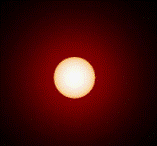Department of Physics and Astronomy: Publications and Other Research

Norman R. Simon Papers
Document Type
Article
Date of this Version
1-1969
Citation
THE ASTROPHYSICAL JOURNAL, Vol. 155, January 1969
Abstract
The structure and pulsational properties of massive stars with helium cores and thin, hydrogen-poor envelopes have been investigated. The core structures are very insensitive to modifications of the hydrogen envelope. However, it is found that the total stellar radius and luminosity are modified by the integrated hydrogen content and by the hydrogen gradient, respectively. The models are pulsationally stable under modest conditions of central condensation (due to a hydrogen-burning shell and/or high hydrogen content). The unstable models are energized almost entirely by the helium reactions in the core, while most of the damping occurs in the thin hydrogen envelope. For each mass, the period is remarkably insensitive to the envelope modifications. The critical models dividing stable from unstable models are determined by (1) a pulsational eigenfrequency Ѡ2 ~ 3 and (2) the size of the hydrogen gradient. Our critical models explain some of the observed features of the classical Wolf-Rayet stars of high luminosity but seem to be too blue with respect to Rublev's sequence of stars on the H-R diagram.


Comments
Copyright 1969 American Astronomical Society.